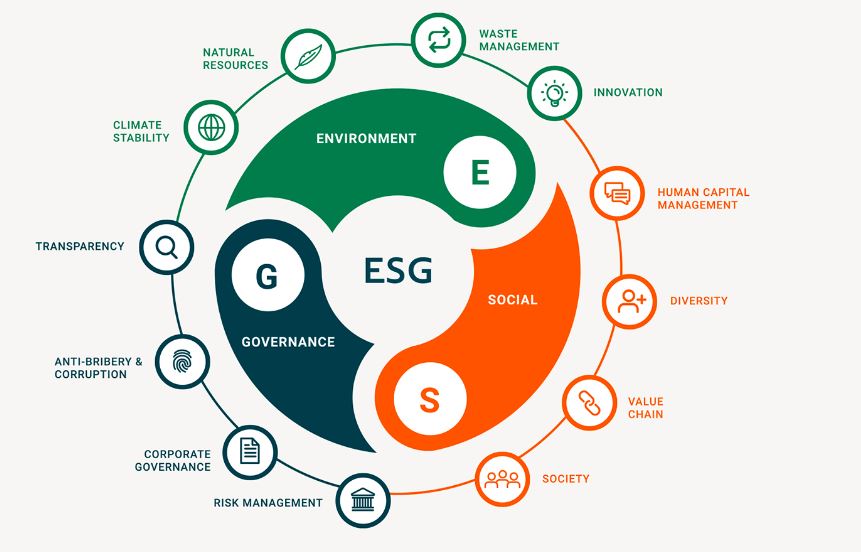
Exploring the types of ESG Investing
Introduction (Types of ESG Investing):
In today’s fast-paced world, more and more investors are seeking ways to align their financial goals with their values. Environmental, Social, and Governance (ESG) are the types of ESG investing that have emerged as a powerful tool to do just that. But what exactly is ESG investing, and what are the different types that allow investors to make a positive impact on the world while growing their wealth? Let’s embark on a journey through the various shades of ESG investing, taking a human approach to understand each one.
Ethical Investing: Investing with Heart
Ethical investing is all about investing in companies or assets that align with your personal values and beliefs. This approach allows you to put your money where your heart is. For instance, if you’re passionate about renewable energy and the environment, you might choose to invest in companies that focus on clean energy solutions and sustainable practices. It’s investing with a purpose beyond profits, and it feels good to know your investments are supporting causes close to your heart.
Impact Investing: Making a Tangible Difference
Impact investing goes a step further by seeking investments that generate positive, measurable social or environmental outcomes. It’s about creating a real, tangible impact while aiming for financial returns. Impact investors often target specific issues like poverty alleviation, affordable housing, or clean water access. By channeling capital into projects and businesses that address these challenges, impact investors play a crucial role in effecting positive change in the world.
Sustainable Investing: Balancing Profit and Principles
Sustainable investing finds the middle ground between financial returns and ethical considerations. It involves integrating ESG factors into the investment decision-making process. Companies are evaluated not only for their financial performance but also for their environmental practices, social impact, and corporate governance. Investors seek businesses that demonstrate a commitment to sustainability and responsible business practices. Sustainable investing acknowledges the interconnectedness of financial success and societal well-being.
Socially Responsible Investing (SRI): Values-Based Choices
Socially Responsible Investing allows investors to create a portfolio that reflects their values by excluding certain industries or companies that conflict with those principles. For example, if you have ethical concerns about the tobacco or firearms industries, SRI allows you to avoid investing in them. SRI gives you the power to make value-based choices while still aiming for financial growth.
Thematic Investing: Supporting Causes You Care About
Thematic investing involves targeting specific themes or sectors that align with your values and beliefs. It’s like picking a cause or area you’re passionate about and building your investment portfolio around it. If you’re enthusiastic about gender equality, you might invest in companies promoting women’s leadership or advancing gender diversity in the workplace. Thematic investing allows you to be strategic about where your money goes while fostering positive change in your chosen field.
Green Bonds: Financing Environmental Projects
Green bonds are debt securities issued by governments, municipalities, or corporations to fund environmentally friendly projects. When you invest in green bonds, your money is directly channeled into initiatives like renewable energy infrastructure, sustainable agriculture, or clean water projects. By investing in green bonds, you’re helping finance projects that benefit the planet and society as a whole while earning fixed-income returns.
Conclusion (Types of ESG Investing):
Types of ESG investing come in many shades, catering to the diverse values and preferences of investors. Whether you’re passionate about environmental conservation, social justice, or ethical business practices, there’s an ESG investing approach that aligns with your values. By investing with a human touch, you not only seek financial growth but also contribute to a better world, one investment at a time. So, go ahead, explore the various shades of ESG investing, and let your investments reflect the values that matter most to you
FAQs: Types of ESG Investing
How does Sustainable Investing work?
Sustainable investing integrates ESG factors into the investment process, seeking companies with strong financial performance and a commitment to sustainability and responsible governance.
What is Socially Responsible Investing (SRI)?
SRI allows investors to exclude industries or companies that conflict with their values, like avoiding tobacco or weapons-related investments while building a diversified portfolio.
What does Thematic Investing involve?
Thematic investing revolves around targeting specific themes or sectors that align with an investor’s values and interests, like gender equality or clean energy.
Can ESG investing provide competitive returns?
Yes, many studies suggest that ESG investments can offer competitive financial returns while promoting responsible and sustainable practices.
How can I get started with ESG investing?
To start ESG investing, you can work with a financial advisor or use online platforms that offer ESG-focused funds and resources. Begin by defining your values and objectives.
Are ESG investments suitable for long-term goals like retirement planning?
Absolutely, ESG investments can be part of a long-term strategy, providing potential for growth while reflecting your values.
What are the risks associated with ESG investing?
Risks can vary based on the specific investments, but ESG investments may carry similar financial risks as traditional investments. However, there may be reputational and regulatory risks if companies fail to meet ESG expectations.
Remember that ESG investing can be tailored to your values and financial goals, so it’s essential to conduct research or seek guidance to make informed investment decisions.
Recommended Articles:
- https://www.bloggerswheel.com/maximizing-the-impact-of-revolutionizing-business-the-power-of-social-media-in-todays-digital-age-a-definitive-roadmap-to-amplify-your-online-visibility/
- https://www.bloggerswheel.com/going-green-and-saving-costs-how-free-ecards-contribute-to-sustainable-office-practices/



